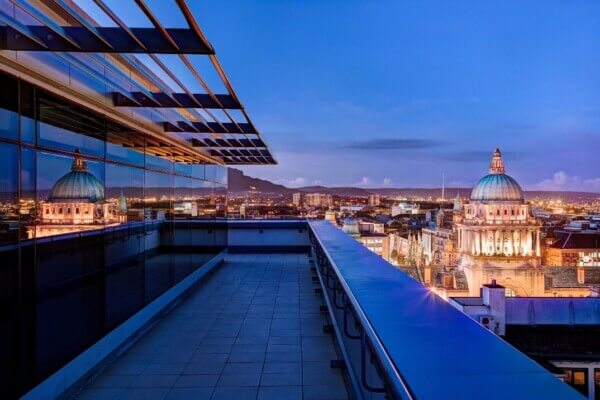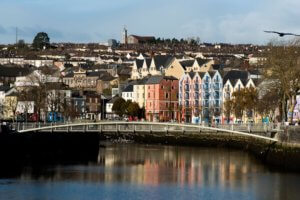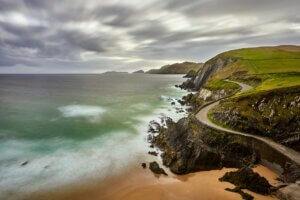Have you considered spending 24 hours in Belfast?
 This post and page contain affiliate links and I may earn compensation when you click on the links at no additional cost to you.
This post and page contain affiliate links and I may earn compensation when you click on the links at no additional cost to you.
For years, Northern Ireland's capital city was a no-go for tourists from the United States, but with the signing of the peace treaty on April 10, 1998, otherwise known as The Good Friday Agreement, that slowly began to change.
For those not familiar with this part of Ireland, let me give you a brief synopsis.
The province, also called Ulster, is made up of six counties that are technically part of the United Kingdom.
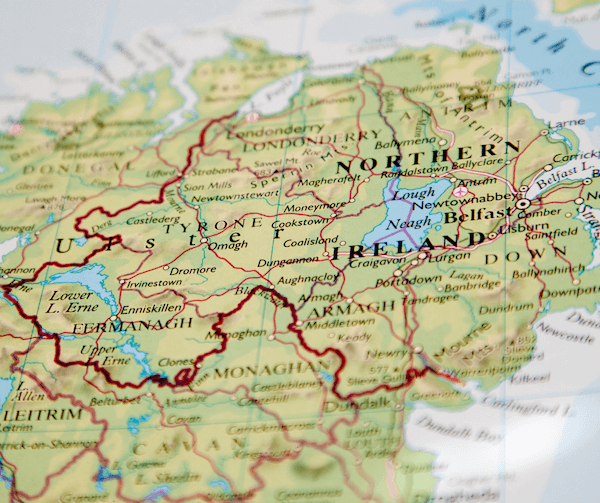
Those counties include Antrim, Armagh, Derry (often referred to as Londonderry by the British), Down, Fermanagh, and Tyrone.
They were partitioned after the rest of Ireland to the south broke off from the U.K. in 1921 and formed its own country, the Republic of Ireland. The agreement was made to keep the six counties of Northern Ireland (with its Protestant majority) within British control.
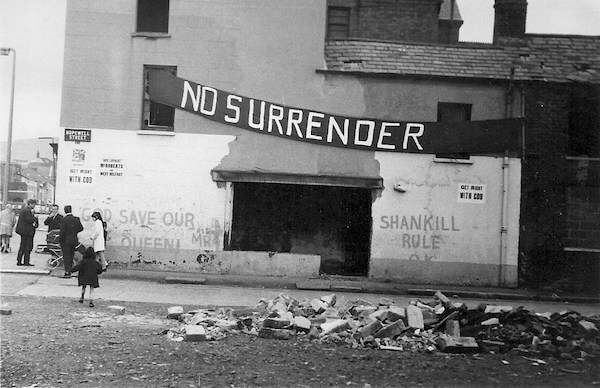
It took some time of course for tourists to accept the fact that The Troubles, Northern Ireland’s 40-year conflict between its Catholic and Loyalist communities, had come to an end.
The peace process certainly changed people’s perception of the region, as well as bringing much-needed economic stimulus to Northern Ireland as well.
I can tell you that it is safe to travel all across Northern Ireland today.
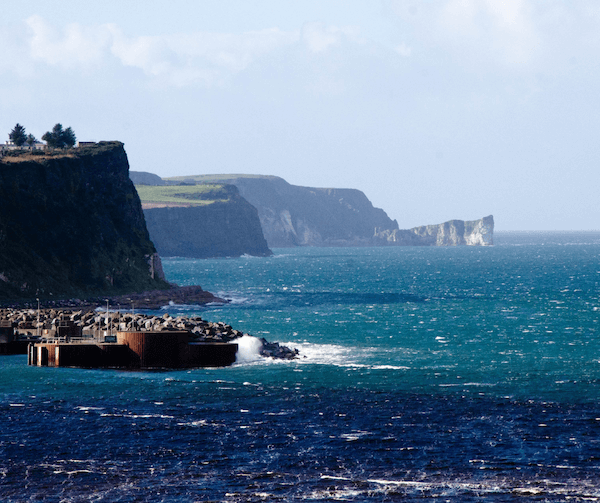
The region is truly magnificent, especially along its coastline.
But there is a lot to see in its cities, too, including Belfast, once the industrial hub of the island of Ireland.
You’ll see plenty of evidence of that when you spend 24 hours in Belfast, similar to a trip I took in 2019.
Getting There
Let me first say that you do not need to show your passport to enter Northern Ireland. The border between the north and the south of Ireland has been seamless for years.
If you’re coming from Dublin, Belfast is super easy to get to. I traveled by rental car from Sligo, but the roads are decent, and it only took about 2 ½ hours to get there.
From Dublin, though, you don’t really need a car.
In fact, you might be better off taking public transportation.
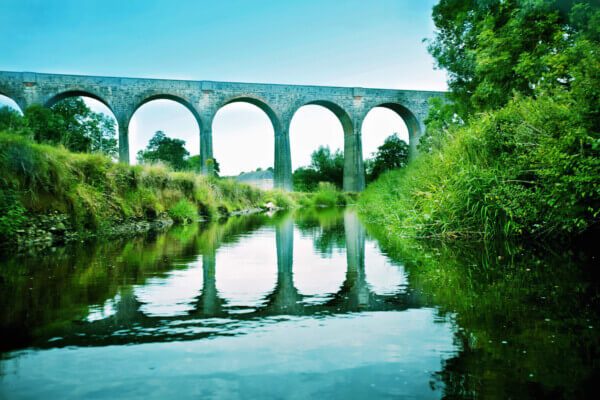
The train service from Dublin to Belfast is probably the most efficient way of getting there. Operated by Iarnrod Eireann (Irish Rail) and NI Railways, the train takes an average of 2 hours and 10 minutes.
There are nine trains leaving from Dublin’s Connolly Station every two hours or so and arriving at Belfast’s Lanyon Place Station.
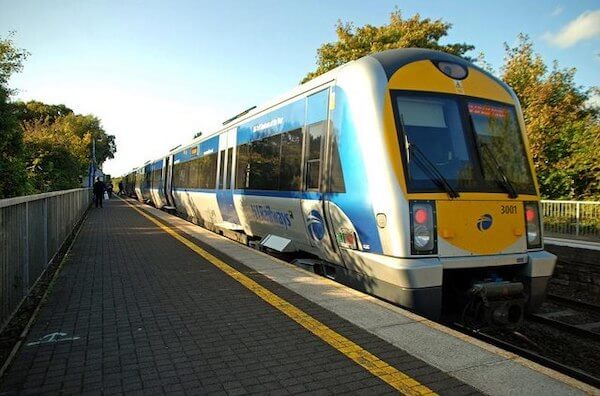
The round-trip fare is approximately €39.
There are a number of options available if you want to get to Belfast by bus.
Bus Eireann operates a bus service from Dublin’s Busaras Station and Dublin Airport to the Europa Bus Station in Belfast. Buses leave every hour or so.
The round-trip fare is approximately €26.50.
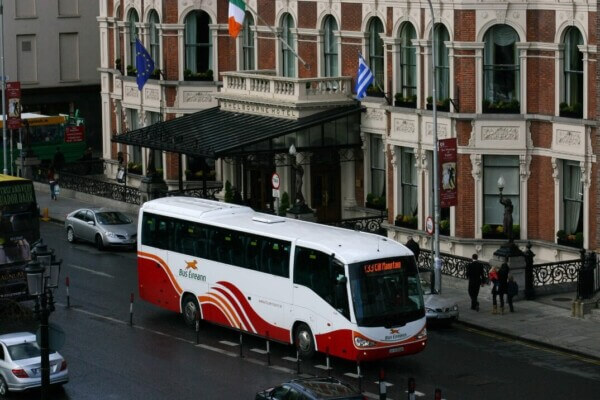
Dublin Coach also operates a service between both cities, from Dublin’s city center to Belfast’s Glengall Street. An adult round-trip fare is £20.
Aircoach fares from Dublin to Belfast are €20 from Dublin City Center to Belfast and €25 from Dublin Airport to Belfast.
Upon our arrival in Belfast, we checked into the Belfast Hilton Hotel located on Lanyon Place, which is very close to the Belfast Waterfront Hall and a few minutes from the city center.
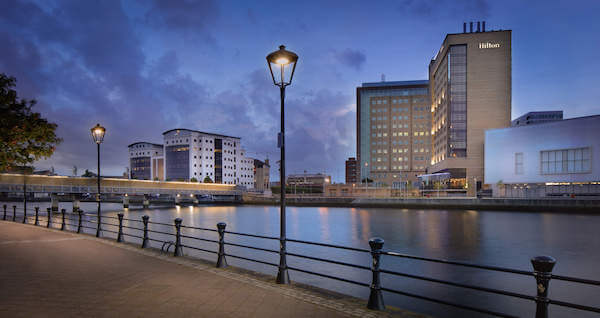
The fare for one night’s stay (four of us sharing a suite that included connecting rooms) was approximately £200 (around $263 at today’s exchange rate), although prices have increased since then so be prepared to pay a bit more.
After unpacking, we took a short walk to the Titanic Quarter, where the Titanic Belfast museum is located.
The area is a hub of activity and is one of the world’s largest urban-waterfront regeneration projects in Europe.
It spans over 185 acres and includes the museum and a mix of residential and commercial space. It’s also where many movies have been filmed in recent years, including the HBO hit series, “Game of Thrones.”
The Paint Hall studio facility is the site where the component parts of the Titanic were painted.
The massive space is climate-controlled and now serves as a fully functioning studio.
This is where the children’s fantasy sci-fi adventure City of Ember was made, turning the studios into an underground city.
Also in the Titanic Quarter is the newly opened Titanic Distillers located in the Titanic Pump House.
There is so much to see at Titanic Belfast that it is almost impossible to cover it here. The museum is a beautiful tribute to the building of the Titanic and to Belfast itself.
It is storytelling at its best, with nine interactive/interpretative galleries to lead the visitor from one section to another.
Visit the New Game of Thrones Studio Tour (excursion from Dublin)
Interactive Galleries Tell the Story of Titanic
Working your way up from the first floor, you’ll learn first about Belfast at the beginning of the 20th century.
This focuses on the city’s most important industries, including shipbuilding, linen, ropemaking, and whiskey distilling.
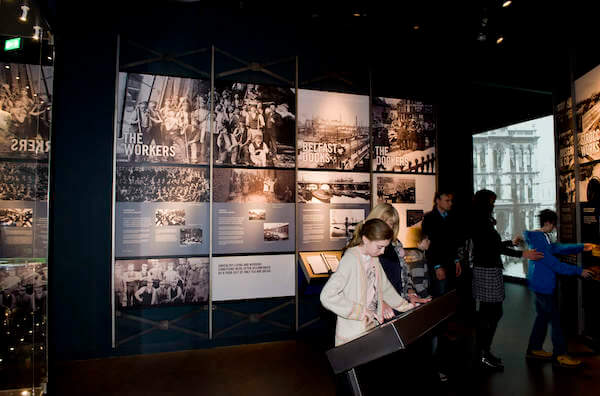
The Shipyard section includes a lovely ride on a mini-car up and around a replica of the ship’s rudder, as you listen to and watch the story of the Titanic’s creation.
The Launch portrays scenes from the day the ship launched on May 31, 1911.
While there was great joy at the completion of such a monumental feat, it’s easy to feel a tinge of sadness, knowing what eventually happened to the innocent people on board.
Other exhibitions include the Fit-Out, which includes a large-scale model of Titanic to illustrate how the ship appeared to the passengers and the crew, including its three classes of cabins.
The ship’s disastrous maiden voyage is depicted in the gallery called The Maiden Voyage.
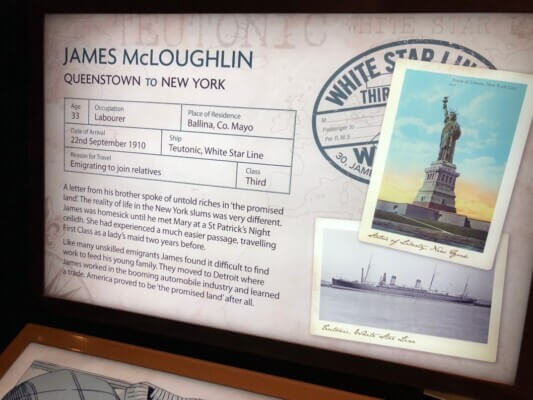
This includes an account of its journey from Belfast to Southampton in England and from there to pick up passengers in Cherbourg, France, and finally to Cobh, where the last passengers boarded.
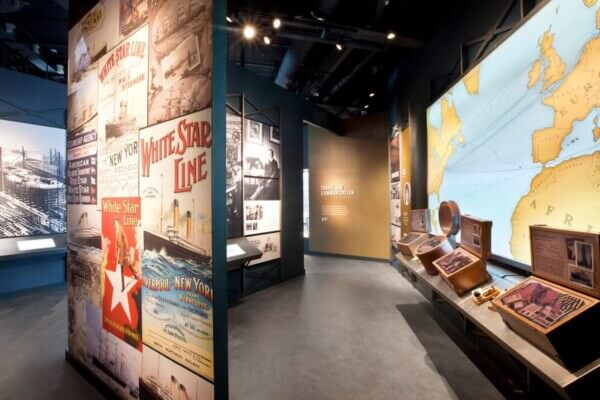
The sixth gallery portrays the sinking of the ship, with the sound of the Morse code in the background.
It’s here that the Titanic story really unfolds, and you feel what the ship’s passengers and crew must have felt during those frantic hours.
We spent three hours in the museum, but we could have spent a lot more time.
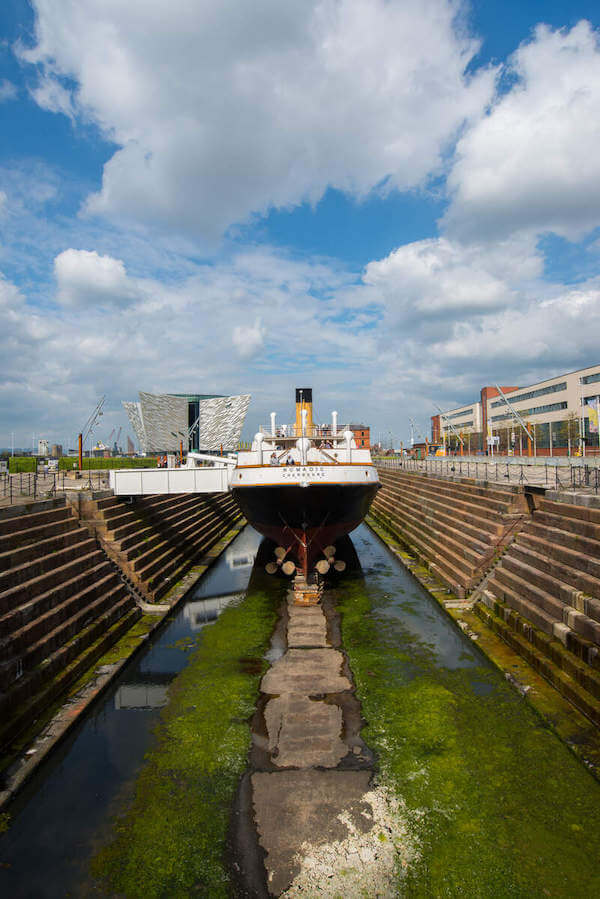
If you’ve got the time, check out the other attractions in the Titanic Quarter.
They include the SS Nomadic, the last remaining vessel of the White Star line.
You can visit the ship with your admission ticket from Titanic Belfast. Make sure you do so within 24 hours of getting the ticket.
Read More: 10 Day Trips from Belfast You Won't Want to Miss
Belfast’s Classic Victorian Pub
Feeling hungry after our museum visit during our 24 hours in Belfast, we decided to grab a bite to eat as well as a beer at the Crown Liquor Saloon, which is housed in a building owned by the National Trust.
During the Troubles, the bar was bombed several times by the IRA, giving it the reputation of being the most bombed pub in Europe.
Today, it has been restored to its original glory, thanks to the renovation efforts of the National Trust.
The floor’s original mosaic tiles are still there, as well as the red granite-topped bar, the decorative ceiling, and the gas lamps that hang from it.
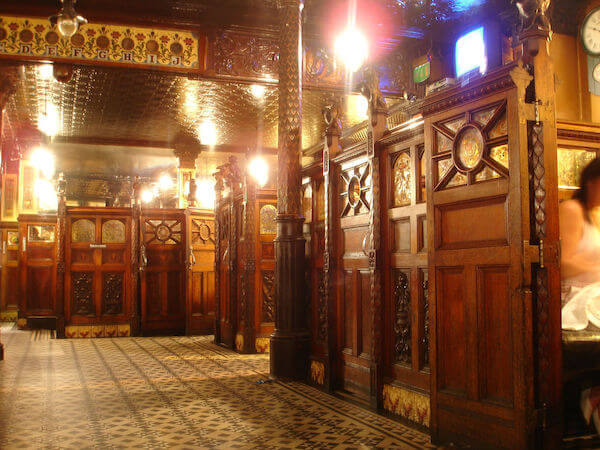
The pub also has 10 snugs used in the past by patrons who didn’t want to be seen by the public.
They are each equipped with gun metal plates for striking matches, along with an antique bell system that was used for communicating with the bar staff.
It is situated across the street from the Europa Hotel, which was bombed over 30 times.
Black Taxi Tour Tells Story of the Real Belfast
We were up early the next morning to take our pre-arranged tour of West Belfast.
We chose Belfast Tours to take us on our journey through the Catholic and Protestant strongholds of the city.
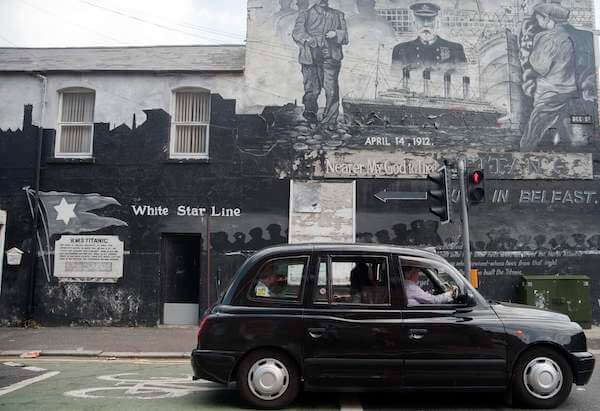
Our driver, who was Catholic, stopped first at a wall that was covered in graffiti.
In this section of the city, you’ll see lots of murals, both to heroes of the Catholic side of the conflict (like Bobby Sands, a member of the Irish Republican Army who died while on hunger strike in the Maze Prison), and also pictures of the late Queen Elizabeth II on buildings in the Shankill Road section.
That’s also where you’ll also see hundreds of British flags flying from both residential and commercial properties.
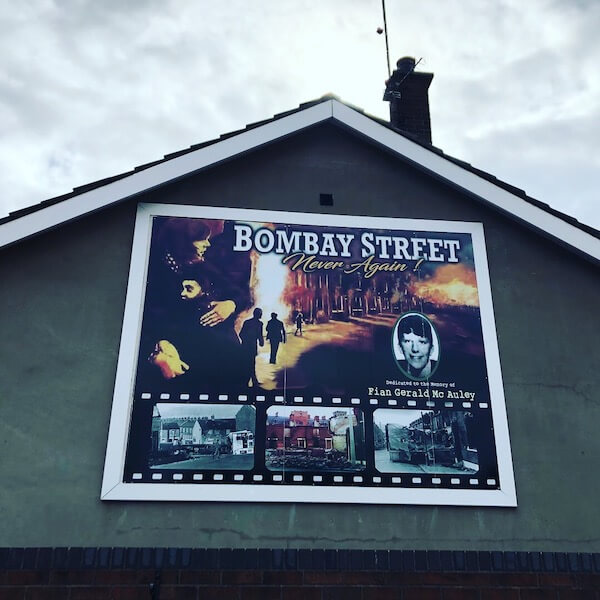
Both neighborhoods are literally a few blocks away from each other. The entrance to them is accessed through a steel gate, which is open during the day and closed at night.
Our driver took us to Bombay Street, where a Loyalist gang burned the homes of 1,500 Catholics in 1969.
The victims’ photos are part of a mural in this neighborhood, along with a separate memorial.
If you look carefully, you’ll see that homes in both sections are different.
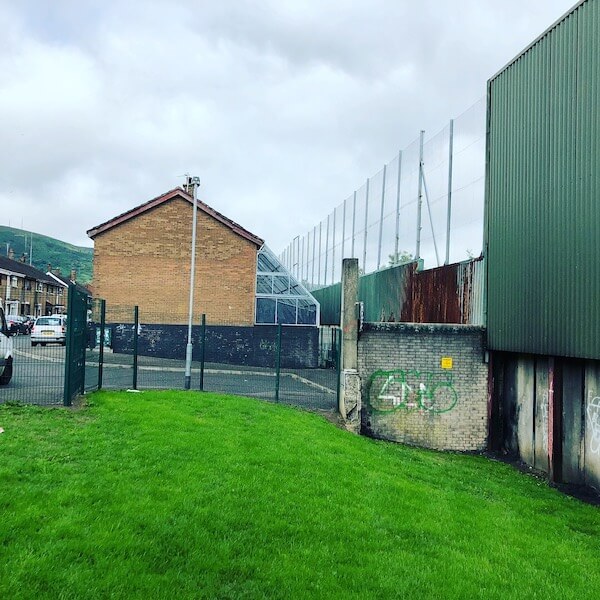
The houses in the Protestant section are set back from the road, while homes in the Catholic neighborhood are closer together and very near to one of more than 50 peace walls all across Belfast.
Behind the houses, you can still see the grating that protected them from being destroyed by firebombs during the conflict.
The most prominent peace line stretches for about half a mile and contains the signatures of President Bill Clinton, the late South African President Nelson Mandela, and others.
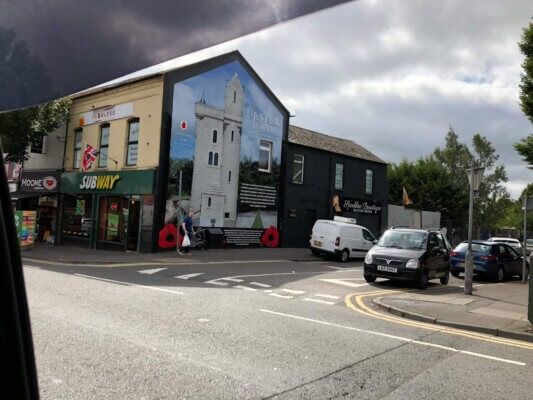
No matter what tour company you choose or even if you choose to do it on your own steam by taking a regular cab there or a bus (take the 10A or the 10H from Fountainville Avenue in the Queen’s Quarter), you’re sure to get a unique behind-the-scenes look into the real Belfast.
Exploring Belfast’s Rich Architecture
Belfast in 24 hours is the perfect place to view some interesting architecture. Most of it is in the Victorian style, but there are some exceptions.
One of them is Belfast City Hall, which was built in the Baroque Revival style.
Opened to the public in 1906 (four years after Queen Victoria’s death), it is in many ways similar to the interior design of the Titanic.
The skilled workers who created the finish for the ship’s lounges and suites, including its carved paneling, put the same finishing touches to this building.
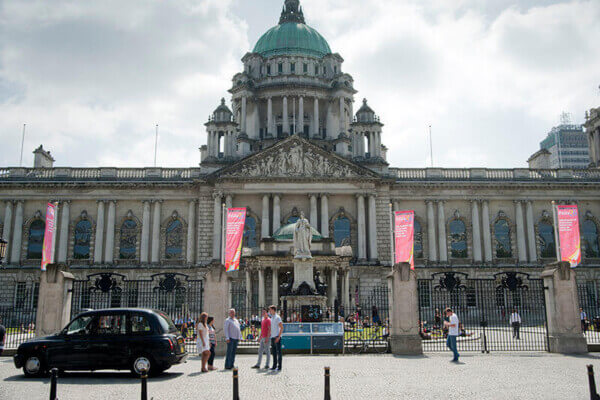
Another unique feature is its collection of stained-glass windows. Over the years, the windows have been unveiled to mark historic events or to celebrate the contributions of various groups and individuals.
Some of them include the Belfast Women’s Window, which is a tribute to the city’s linen industry workers.
Others are tributes to the Royal Ulster Constabulary (RUC), Belfast’s former police force; the Famine Window; and the Lunette Window, honoring the royal coat of arms, among others.
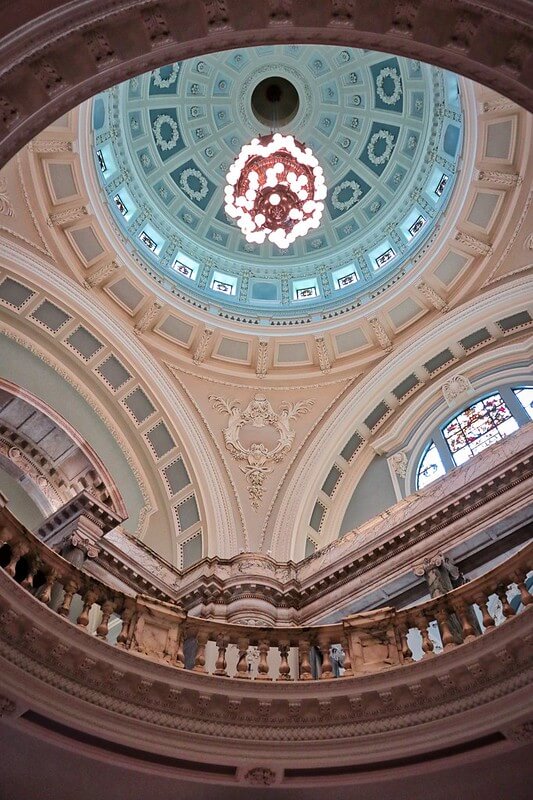
The hall also includes a ground-floor visitor exhibition, which can be viewed in 16 separate rooms. Both the exhibition and the guided tour of the hall are free.
Don’t forget to stop at the Titanic Memorial Gardens outside of City Hall, which names all 1,512 victims of the disaster.
Belfast City Hall is open Monday through Friday from 9:30 a.m. to 5 p.m. and on Saturday and Sunday from 10 a.m. to 5 p.m.
Free guided tours are also available at these times.
Find Cheap Flights to Ireland with Aer Lingus
Belfast’s and Northern Ireland’s Only Victorian Theater
The Grand Opera House is another perfect example of the city’s rich Victorian architecture and something you shouldn't miss during your 24 hours in Belfast.
It is, in fact, the only Victorian theater in Northern Ireland. Constructed in 1895, it, too, was severely damaged by the IRA during the early 1990s.
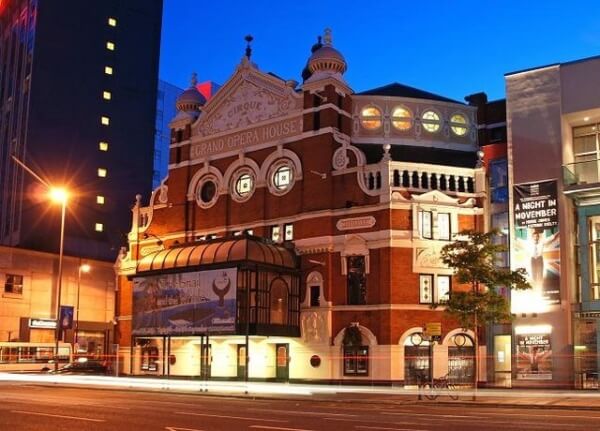
It has thankfully been renovated and boasts many fine features, including carved elephant heads that frame the auditorium’s private boxes.
The Opera House hosts performances of all kinds, including operas, musicals, plays, ballets, dance, and family shows, as well as pantomimes.
Behind the Scenes Backstage Tours, which are recommended for ages 10 and up, can be booked by going to the Opera House website.
Standard tickets cost £12.50 and £9 for children.

Another Victorian hallmark is St. George’s Market, built in three phases between 1890 and 1896.
The market, which is the last surviving Victorian covered market in the city, is open at the weekends only from 8 a.m. to 2 p.m. on a Friday, from 9 a.m. to 3 p.m. on a Saturday and from 10 a.m. to 3 p.m. on a Sunday.
Stop by for a coffee to soak in the atmosphere of this storied place.
Places to Eat and Stay During Your 24 Hours in Belfast
Some of the best places to eat in Belfast include the Muddlers Club, a cool industrial-style deco eatery located in the historic Cathedral Quarter section of the city.
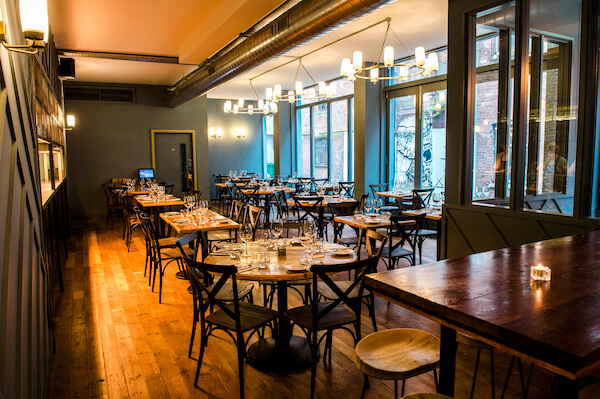
It is named after a society founded by the Irish revolutionary, Wolf Tone, whose members met in this very spot during the 1790s.
The restaurant features dishes that are rich in fresh local ingredients. You can try the five-course tasting menu for £85. Add an extra £60 for wine pairing. Reservations are required. A vegetarian/vegan menu is also available at £75 per person, with an additional £60 for wine.
While there are plenty of hotels in Belfast, there are some of my suggestions for more moderately-priced accommodation during your 24 hours in Belfast.
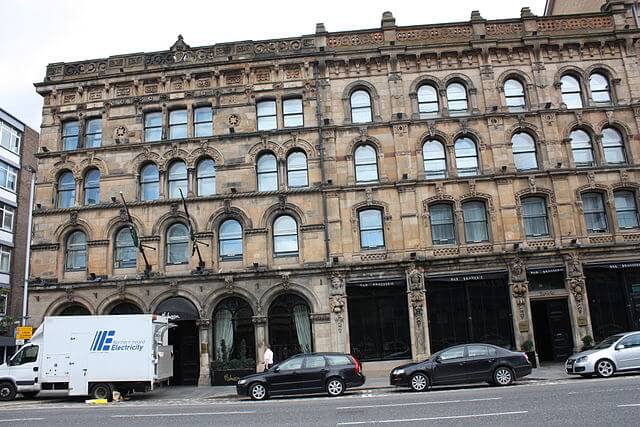
The Malmaison Hotel is a boutique hotel located in Victoria Square.
Its décor is inspired by the Titanic. It is centrally located and pretty much close to everything, including shopping, restaurants, nightlife, and more.
Its nightly rates are anywhere from £119 per night to a costlier £289 per night.
Vagabonds Hostel is one of the best in Belfast, with a superior double room costing about £50 per night and a superior two-bed twin room also around £50 per night. Rooms catering to larger groups are cheaper, starting at £18 per person.
All rates include free breakfast and free tea or coffee all day.
Other attractions that you might be interested in while spending 24 hours in Belfast include the Crumlin Road Gaol, The Ulster Museum, Belfast Castle, and Stormont Belfast.
Have you been to Belfast lately? If so, let me know in the comments below.

